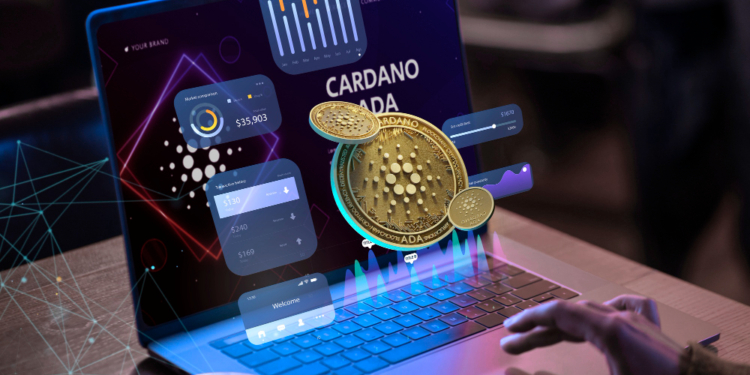The world of cryptocurrency and NFTs has been witnessing an unprecedented surge in popularity. This journey began with the advent of Bitcoin in 2009, introduced by the enigmatic Satoshi Nakamoto, whose identity remains shrouded in mystery.
Fast forward to today, and the realm of web3 projects has flourished. Novice traders often wonder how to make the most of their digital investments, seeking avenues to leverage their cryptocurrency holdings across various commerce domains. The landscape keeps evolving as major retailers embrace crypto as a mode of payment.
What are crypto and NFTs?
Cryptocurrencies are digital currencies that operate on a technology called the blockchain, a transparent public ledger. Users may encounter minor gas fees for each transaction, covering computing costs. These transactions are recorded publicly on the blockchain, enabling users to inspect all wallets’ transaction history and assets.
Non-fungible tokens, or NFTs, are digital collectables traded on NFT marketplaces. Unlike cryptocurrencies, NFTs do not inherently possess value; their worth hinges on the project’s significance and utility. Each NFT boasts uniqueness and rarity, which can make some more valuable than others.
But Why NFTs?
NFTs have garnered substantial attention for connecting digital art and virtual real estate. However, their potential extends far beyond these well-known applications. Acknowledging the profound impact NFTs can have on various aspects of life is essential.
One of the primary strengths of NFTs is their capacity to offer verifiable ownership and authenticity for a wide array of assets beyond art and virtual land. Real-world assets like real estate, luxury goods, and intellectual property rights can be represented using NFTs. By digitizing these assets and associating them with unique tokens, NFTs introduce a secure and transparent method for transfer and verification, mitigating the risks associated with fraud and counterfeiting.
Furthermore, NFTs can revolutionize philanthropy and charitable causes. Charities and non-profit organizations can create NFTs as a novel means of fundraising. Donors contribute to a cause and receive a tangible and tradable digital asset in return. This innovative fundraising approach can attract a broader audience and drive positive social change.
NFTs also hold the potential to reshape the gaming industry by introducing new levels of ownership and interoperability. In-game assets and virtual items can be tokenized as NFTs, allowing players to own and trade digital possessions across different gaming platforms. This opens doors to cross-game collaboration, secondary markets for virtual assets, and enriched player experiences.
The versatility of NFTs extends into realms such as supply chain management, digital identity, and ticketing systems, where these unique tokens can enhance transparency, streamline processes, and combat fraud.
Top NFT Use Cases in 2023
- Fashion Unbound: NFTs are combating counterfeit products, providing authenticity to fashion enthusiasts. Luxury brands like Gucci, Louis Vuitton, and Marc Jacobs are already experimenting with digital NFT versions of their products, connecting with their audience digitally.
- Music, Royalties & NFTs: NFT technology solves the long-standing issues of music artists and royalties. It eliminates middlemen, granting artists more freedom and automating royalty payments. Indie artists can now monetize their songs without a massive following or a record company.
- Patents and Intellectual Property: NFTs safeguard intangible assets, including intellectual and patent rights. Certificates can be converted into NFTs, timestamped with ownership information, and offer legal safeguards to maintain document authenticity.
- Soulbound NFTs: Inspired by World of Warcraft, these NFTs cannot be traded after they are sent to an address. They are ideal for storing valuable personal data like medical records, criminal records, and employment history securely and transparently.
- Tickets & Event Passes: NFTs are used as tickets for concerts, VIP passes, and access to exclusive events, eliminating counterfeit ticket issues.
Conclusion
In the grand scheme of things, the applications of NFTs continue to diversify and evolve, offering exciting possibilities for the future. As we enter 2023 and beyond, it is evident that NFTs have the potential to revolutionize numerous industries. They are collectables and tools for intellectual property protection, real estate transactions, event ticketing, and more. The top NFT use cases for 2023 highlight the versatility and utility of these digital assets, creating opportunities for creators, investors, and individuals alike.
As the NFT market continues to expand, expect new trends and innovative uses to emerge, further fueling the growth of the NFT ecosystem. Whether you’re an art enthusiast, a tech-savvy investor, or a business owner, understanding the potential of NFTs and staying informed about the top NFT use cases is essential. Embrace this transformative technology and seize its opportunities, for the world of NFTs holds immense creative and economic potential.


Discussion about this post